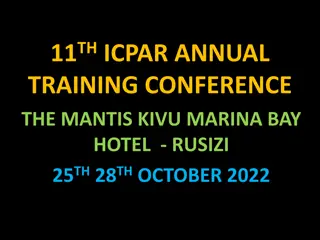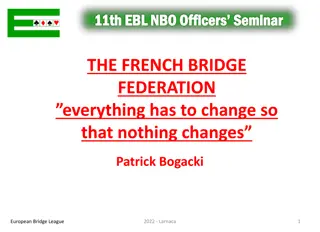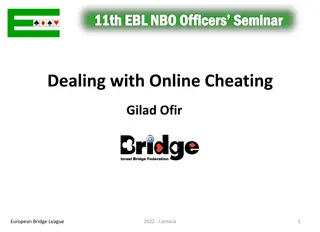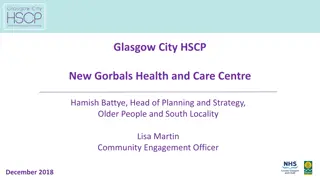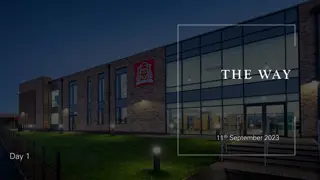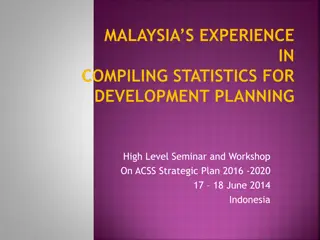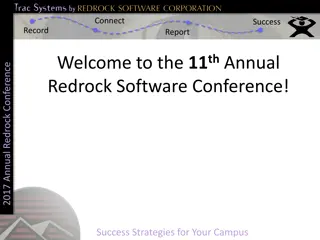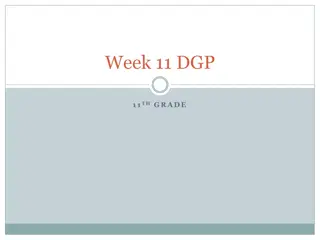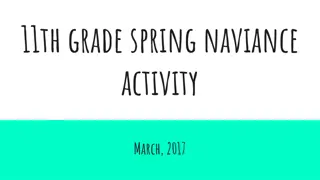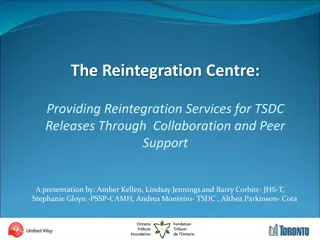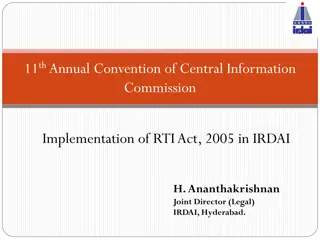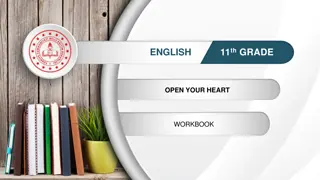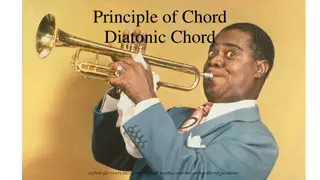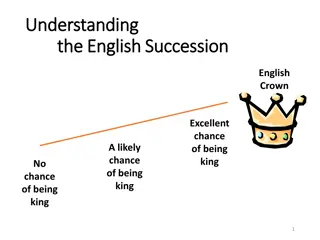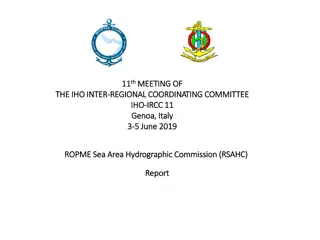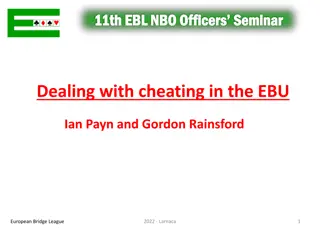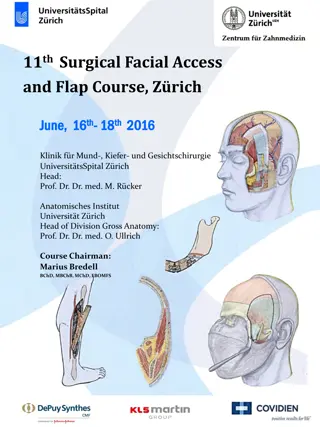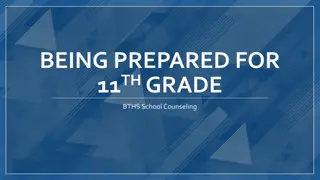Centre-Based Training: Art & Design Workshop - 11th October 2014
This informative content provides a detailed schedule of a training workshop focusing on art and design in primary schools. It covers topics such as the elements of art, teaching strategies, practical workshops, assessment, curriculum guidelines, and aims of the module. Participants explore art techniques, discuss child development in art, and integrate art with other curriculum areas. The session also includes interactive activities like discussing the differences between art & design and technology, exploring artists' works, and planning art schemes.
Download Presentation

Please find below an Image/Link to download the presentation.
The content on the website is provided AS IS for your information and personal use only. It may not be sold, licensed, or shared on other websites without obtaining consent from the author. Download presentation by click this link. If you encounter any issues during the download, it is possible that the publisher has removed the file from their server.
E N D
Presentation Transcript
Centre Based Training Art & Design 11th October 2014
Plan for the day 9.30am 9.45am 10.30am Coffee break and networking of ideas Welcome and Introductions (including setting a task) Art in Primary Schools - Where are we now? What is art? Elements of art Teaching art Responding to art 10.50am Exploring art Practical workshop 2D art 11.50am Assessment in art and evaluation 12.00pm Lunch 13.00pm Practical issues including health and safety The classroom environment 13.45pm Exploring art - Practical workshop 3D art 14.45pm Display and evaluation of work 15.00pm Planning a scheme of work Examples Criteria for planning Feedback to group 15.30pm Questions and evaluations
The aims of this module are: To acquire knowledge and understanding of the subject; resources required to teach the programme of study To understand the main features of child development in art To be able to discuss works of art at a level suitable for primary aged children To be able to forge links with other areas of the curriculum To put theory into practice
Where are we now with 2014s National Curriculum? By the end of Key Stage 1: By the end of Key Stage 2: Pupils should be taught: Pupils should be taught to develop their techniques, including their control and their use of materials, with creativity, experimentation and an increasing awareness of different kinds of craft and design. to use a range of materials creatively to design and make products to use drawing, painting and sculpture to develop and share their ideas, experiences and imagination Pupils should be taught: to create sketch books to record their observations and use them to review and revisit ideas to develop a wide range of art and design techniques in using colour, pattern, texture, line, shape, form and space to improve their mastery of art and design techniques, including drawing, painting and sculpture with a range of materials [for example, pencil, charcoal, paint, clay] about the work of a range of artists, craft makers and designers, describing the differences and similarities between different practices and disciplines, and making links to their own work. about great artists, architects and designers in history.
What is art? What is art?
Activity 1 Discuss the difference between Art & Design and Technology Record the outcome of your discussion
Activity 2 Artist in focus Choose an artist or work of art... Why did you choose that one? What are the key questions that you would ask a child about the piece? Include sensory description See Hear Smell Feel - Taste?? (imaginary tasting)
Elements of art (2D) Line EYFS - Walk a line/make a line KS1 - Lines from sounds, feelings, stories KS2 - Lines from texture (i.e. Cat fur) Tone EYFS - Light and dark KS1 - Light and dark tonal scale KS2 - Shadows and shading Colour EYFS - Primary colour/secondary colours KS1 - Secondary colours/Tertiary colours KS2 - Colour mixing for landscape/portraits Pattern EYFS - Printing KS1 - Repeating patterns KS2 - Fabric design/Half drop/overlay Use of IT now in all areas of art where appropriate
Teaching art Teaching art
Examples of Examples of children s children s work work
Teaching art Cross curricular links Use of IT Use of IWB Number and length of sessions - see school s scheme of work Objectives Skills list Resources Space (including storage) The key to a good art lesson is to ENJOY it...
Responding to Art Gustav Klimt The Kiss Use your 6 frames to show: Contrast lines Curved and straight Contrast tones Light and dark shapes Contrast colours Dark, hard colours male Light, pastel colours female Look for evidence within the painting to support your work
Exploring Art Exploring Art
Exploring art Practical workshop Take Klimt s Kiss as the inspiration; Use line, tone and colour, in the style of Klimt, to produce your own representation of Caring ; for humans, for animals, for the planet or for inanimate objects. Include two subjects in your piece. Decide how you will contrast the subjects; hard and soft, strong and weak, dark and light etc... Use any of the materials available Tip: Google - Klimt for kids images
Evaluate Evaluate
Evaluate: What feedback would you give? Be positive Be helpful Make suggestions that are sensible Never make fun of anyone s efforts As the teacher, how would you assess the work? Level descriptors have been used in the past, are they still useful? What does the school assessment policy say? How can you tell if progress has been made? How would you display the work?
Practical Issues Health and Safety issues Resources Classroom environment Storage of work Display Gallery visits
Time to Time to experiment experiment
3Dimensional work Sculpture Progress in 3D work: Foundation stage : Building with boxes, tubes etc Simple fixing (glue tape string staples) Simple armatures boxes tubes rolled or balled newspaper Key Stage 1: glue gun) Armatures boxes tubes sticks wire rolled or balled newspaper Planning a finished model (purpose) Fixing (PVA glue tape string staples supervised Key Stage 2: Planning and completing model independently Fixing (staples tape cool glue gun PVA glue wood glue string nails screws structural reinforcements) Armatures shaped boxes/tubes jointed wire/sticks rolled or balled newspaper wire netting/mesh Clay work will be covered in a separate session
3D 3Dimensional work Sculpture
Armatures Armatures are the support inside a model. Armatures can be made of anything that will support the structure of the model. Boxes and Tubes Wire Sticks Rolled newspaper
Using wire as an armature
Covering models Models can be covered in: Modroc (plaster bandage) Newspaper (papier mache) Fabric (either glued or soaked in paste first) Tissue Kitchen towel (soaked in paste)
Planning art lessons What documents would you use to plan your art sessions? What resources could you use? What is on the internet that could help you? Make sure you look at the school s own scheme of work for art
Planning a scheme of work Using a skills route Examples of medium term planning 4 and 6 Criteria for Planning: Clear objectives Key questions Mind map Sketch book work Experimentation Work towards final design Resources Skills Discussion and evaluation
Planning for Art Art needs to be planned as a discrete subject, although it may also complement learning in other disciplines, as this list of characteristics of good art teaching demonstrates: A sequence of lessons is thoroughly planned Classroom assistants share the planning and understand the objectives Resources are well organised Lessons target specific skills The purpose of the lesson is fully explained The introduction is supported by well-chosen visual resources The teacher demonstrates a practical technique confidently The teacher evaluates and monitors both the process and outcome so that planning for progression can be systematic. Ofsted 1998
Example of art planning Year 5 And Example of art planning Reception
Questions Evaluations
TES Resources: bit.ly/sketchbooksImages bit.ly/selfSuccess (artists techniques) bit.ly/Tellingtales (class display) bit.ly/ArtThemes1 (artists for teaching themes) bit.ly/HowToDraw1 Book resources: Clement.R (1993) The Art Teacher s Handbook, 2nd edition. Cheltenham: Stanley Thomas De Sausmarez, M (2007) Basic Design, The Dynamics of Visual Form. 2nd edition. London. A and C Black Edwards, B (1993) Drawing on the Right Side of the Brain, new revised edition. London: Harper Collins. Meager, N (1993) Teaching Art at Key Stage 1. Corsham: National Society for Education in Art and Design (NSEAD) Read, H (1937) Education Through Art. London: Faber Robinson, G. (1995) Sketch-books: Explore and Store. London: Hodder and Stoughton. Simpson, I. (1982) Drawing, Seeing and Observation, 2nd edition. London . A and C Black. Taylor, R. (1986) Educating for art: Critical Response and Development. Harlow Longman. NSEAD Belair Best Practice Series - www.belair.com Topical Resources Series - www.topical resources.co.uk
For more information/copies of resources: karenspringett1@hotmail.co.uk



